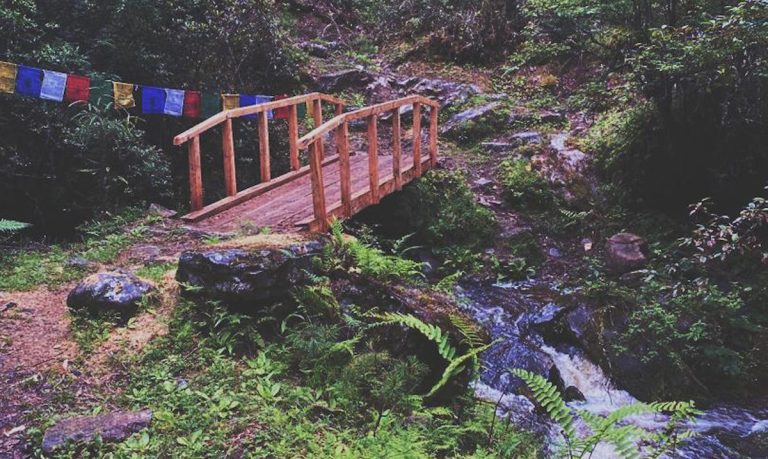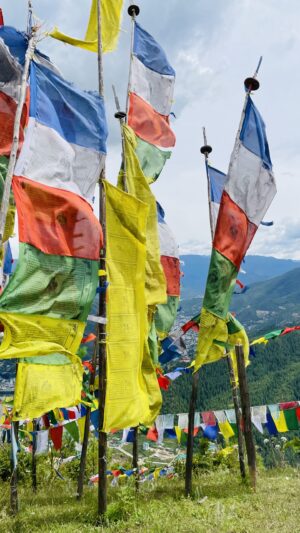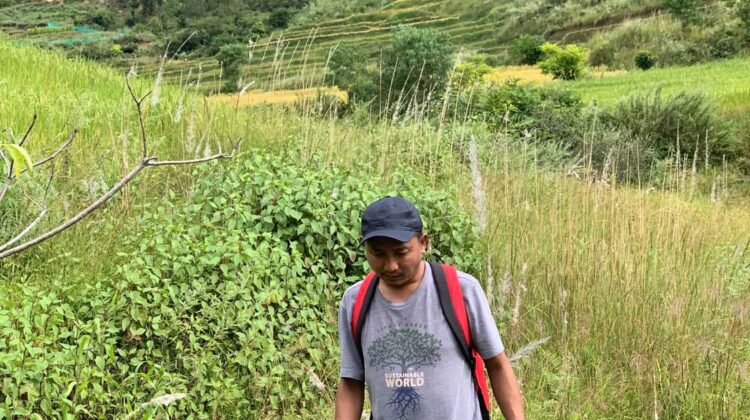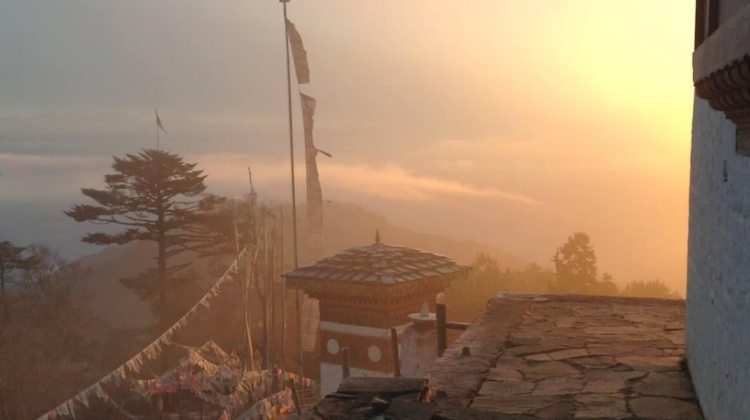This blog from Jamyang and Tandin records their experiences on the Trans Bhutan Trail prior to national lockdown. They look forward to continuing their journey along the trail once it is safe to do so. In the meantime they share their stories with you.
“Travelling isn’t always pretty. It isn’t always comfortable. Sometimes it hurts, it even breaks your heart but that’s okay. The journey changes you; it should change you. It leaves marks on your memory, on your consciousness, on your heart, and on your body. You take something with you. Hopefully, you will leave something good behind.”
– Anthony Bourdain
Many think travelling is a way to relax and feel the fresh air of nature and different places. It absolutely can be!
However, since we began our first journey on the Trans Bhutan Trail (TBT) from Haa to Paro as new TBT staff members, we have found travelling can actually help you understand what’s going on in the world. We started collecting old stories. We were left speechless when we walked on the trail and our Guide started speaking about the historic sites, temples, flora and fauna. We soon realized that there are so many welcoming and mesmerizing stories in our country hidden and unknown to most of the people. That is truly what the Trans Bhutan Trail stands for – representing the old, hidden stories in Bhutan including hikers travelling along the trail.

Haa Town
Haa town is known for its ancient traditions and rituals, and with its thinly populated valley region, this place gives you the tranquilizing feel like no other place in the world. Lhakhang Karpo (White temple) and Lhakhang Nagpo (Black temple) from the 7th century lie nestled in the foothills of the Meri Puensum Mountains.
On our first day to Gup’s (Local leaders) office at Katso, the team was introduced to elder village people who have walked the trail; which starts from Kalila including the old elders who travelled with their fathers and horses to Paro to exchange goods. While interviewing the elders, they shared lots of inspiring stories. Listening to their stories is an inspiration to becoming good storytellers!
We were hosted at a farm home stay at Haa while experiencing the traditional culture, food and the daily lifestyle of Haa people. Having a Guide who drove the team our destinations made our travel very fulfilling.
Here are some interesting stories we have covered during our trip in Haa.

Mini Taktsang in Haa?
Katsho gewog is one of the smallest amongst the six gewogs in Haa District with 250 households. Amongst the other prevalent destinations in Haa such as the White and Black temples, Meri Phuensum and Nubtshonapata, Jungney Dra[1] is well known amongst the local communities of Haa for its historic background though it is not so popular out of Haa valley.
Local Name Jungney Dra
Date of Construction More than 200 years ago
Category Goenpa/Temple
Location Bali Village, Katsho, Haa District
Tip: If you are visiting Jungney Dra during the warm summer of Haa, do not forget to carry a reusable bag to collect edible mushrooms.
Jungney Dra is a small temple hanging off a steep rocky cliff overlooking the dynamic view of Haa valley. To reach Jungney Dra, one might need to be adventurous enough and be prepared to hold onto ropes to get there. However recently one of the Queens have added concrete steps to make the place more accessible to visitors.
Sangay, a local community member said, ”Jungney dra is also referred to as Mini Taktsang[2] by the local people owing to its position on the cliff. It is Guru Rinpochoe’s[3] Nye which has the right footprint of Khandro Machig Lhabdron.” Sangay also described the diverse luscious forest located below the temple primarily dominated by the green pines and red and pink rhododendrons.






[1] Dra is the Dzongkha word for cliff.
[2] Taktsang is a sacred Himalayan Buddhist temple located on a cliff in Paro.
[3] Guru Rinpochoe was an 8th century Buddhist master from India & regarded as the Second Buddha.







